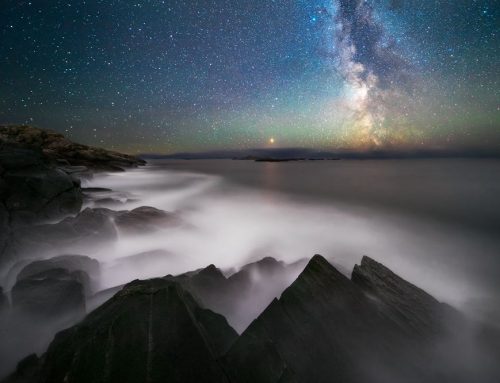
@ Kevin Meynier Shot with NiSi Switch
Landscape scenes can have simple or complex transitions from foreground to light source (usually the sky). The simplest transition occurs when shooting a scene with a flat horizon and no features which cross the horizon. The most complex transitions occur when light is patchy and irregular, such as when shooting a forest scene or within a twisted canyon.
The simpler the light transition, the more suited a scene is to using a GND to control the dynamic range of a scene.
The most complex lighting scenarios are also the most complex to capture using filters. In scenes where there are massive dynamic range differences (such as in a rocky gorge), the best and safest way to capture the dynamic range of the scene is to shoot multiple exposures exposed separately for each feature of the scene. This requires patience both at the scene and a degree of post processing competence to achieve a good, natural appearing end result.
Mountains are a favourite subject of photographers and can be challenging to shoot. I still often use filters when photographing mountains. Here are some mountain lighting scenarios and my approach to using filters (or not):
- Shooting mountains opposite a sunset or sunrise: This is the easiest scenario to photograph. With strong direct light, the mountain will often be lit quite brightly and the foreground may also be well lit as the light is behind you. I would typically use a soft or medium edged GND to balance out the light.
- Shooting a side-lit mountain. In this lighting scenario, mountains have a strong light source from one side of the image while there is also a natural gradient from top to bottom of the scene as sky transitions to land. This scenario lends itself well to using a filter system that allows independent articulation of two or more filters such as the NiSi switch filter. I would recommend using a soft or medium edged GND filter oriented vertically to even out the exposure difference between sky and foreground. I would angle the second filter tilted with the dark edge toward the light source. This balances out light transitioning from one side of the image to another. Generally, this second filter would be a soft edged GND.

- Shooting into light and mountains. This is the most challenging of scenarios and one where my first option is to shoot multiple exposures and blend them in post processing. The NiSi switch does allow another option: If both filters are angled such that the filters’ transition line matches the contour of the mountain, this may allow capture of the scene in a single image. This is however a very specific lighting scenario.

@ Brendan van Son Shot with NiSi Switch
The NiSi Switch – The Filter Holder You Didn’t Know You Needed!
by Dylan Toh





